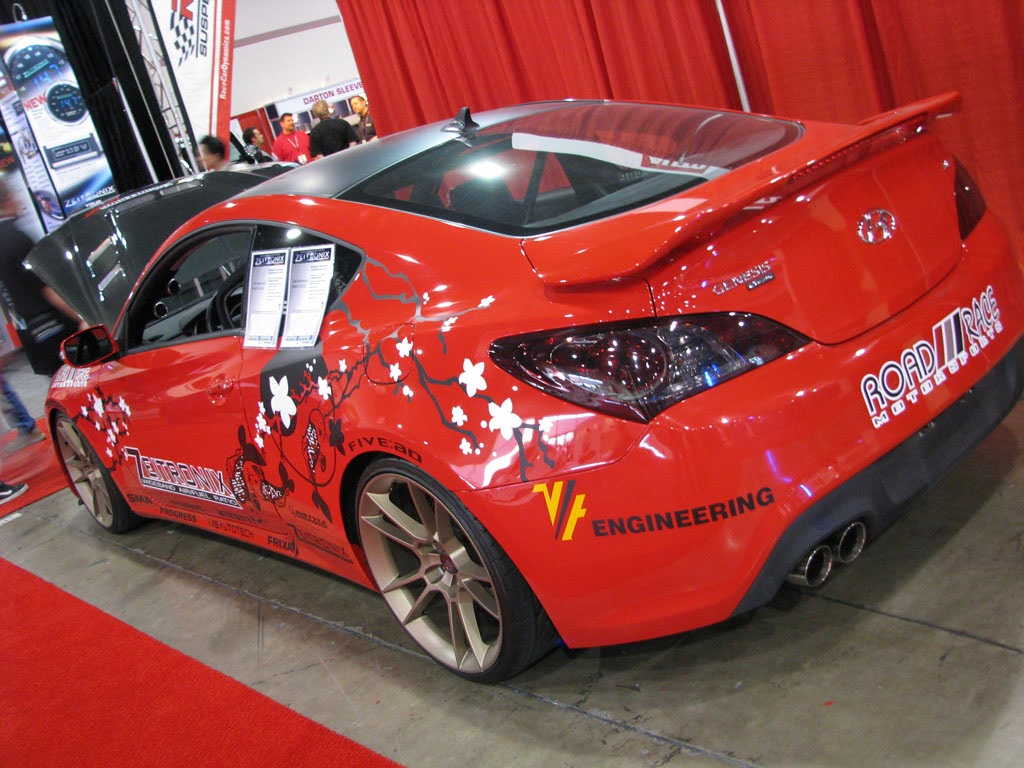
While F1natics is usually laser-focused on the world of Formula 1, every once in a while something from the broader automotive world calls for our attention, and SEMA is exactly that. Registration for SEMA and AAPEX 2025 just opened, and it feels like a homecoming.
Before we were covering Grand Prix weekends and driver drama, our journey started deep in the automotive aftermarket scene: from designing a custom body kit, exhaust system, carbon fiber manufacturing, and running an aftermarket parts business, to working with names like ARK Performance, Road Race Engineering, Zeitronix, Five: AD, US Autotech, Progress Suspension, BC Racing, Frixa Brakes, and Puente Hills Hyundai. We even got behind the wheel, racing in various series, and most memorably exhibiting at SEMA 2009. So when we talk about SEMA, it’s with genuine passion.
And 2025 is already shaping up to be a year you won’t want to miss.
A Look Back: Highlights from SEMA 2023 and 2024
The past two years have shown that SEMA is still the ultimate playground for innovation, style, and performance:
- EV Swaps and Electrification: From fully electric classics to hybrid conversions, the aftermarket has embraced electrification without losing its love for internal combustion. 2024’s show featured everything from EV-swapped DeLoreans to full electric drift cars.
- Off-Road Explosion: Overlanding, UTVs, and rock crawlers dominated the West Hall. The creativity in builds, and the sheer technical capabilities, leveled up dramatically.
- Restomods and Heritage: Iconic models like the Toyota Supra, Nissan Z, and Ford Bronco had a strong presence, blending old-school aesthetics with modern performance.
- New Tech and Materials: 3D-printed parts, carbon fiber innovations, and advanced tuning technologies like AI-assisted mapping made their debut.
- Aftermarket Diversity: An inspiring growth in diverse builders, female-led teams, and international entries has made the show feel fresher, more global, and more dynamic than ever.
At AAPEX, the business-to-business side of the aftermarket industry, the focus sharpened on cutting-edge manufacturing, global supply chain shifts, and the future of repair and diagnostics for a changing fleet. This will be especially interesting given the global tariff situation happening now.
What’s Coming in 2025?
SEMA 2025 is teasing even bigger ambitions, and based on the early buzz, here’s what we’re expecting:
- AI-Driven Performance and Design: Several exhibitors are promising breakthroughs where AI isn’t just helping tune engines: it’s designing parts, optimizing aerodynamics, and helping with predictive maintenance.
- A Surge of Hyper Hybrids: With supercars and sports cars increasingly moving toward hybridized powertrains, expect to see an aftermarket arms race around tuning and modding this new generation of vehicles.
- Expanded EV and Hydrogen Zones: Alternative fuels are no longer a niche. Expect SEMA 2025 to feature a bigger-than-ever showcase of hydrogen-powered builds alongside next-gen EV concepts.
- Global Builders’ Championship: International teams are bringing their A-game with wild, world-class builds vying for the spotlight.
- More Interactive Experiences: Rumor has it that SEMA Ignited (the show’s public afterparty) will be bigger and rowdier, and there’s a push to make the show even more interactive for visitors, with live builds, tech demos, and racing simulators.
Racing Technologies: Where SEMA and Formula 1 Overlap
While SEMA is famous for street and show builds, beneath the surface there’s a deep, shared DNA with the racing world, including Formula 1.
- Aero and Computational Design: Many of the aerodynamics advancements we see in F1, like CFD (computational fluid dynamics) testing and real-time aero mapping, have trickled into the aftermarket. Today’s top-tier tuners and body kit manufacturers use similar digital wind tunnel technologies that F1 teams pioneered.
- Advanced Materials: Carbon fiber, titanium alloys, and composite manufacturing were once exclusive to race teams. Now, thanks to wider access to suppliers and new fabrication methods, they’re standard in elite-level SEMA builds.
- Suspension and Chassis Engineering: Adjustable coilovers, dynamic damping systems, and laser alignment, technologies developed for racing precision, have become core to high-end street and track builds.
- Data and Tuning Software: The rise of motorsport-grade telemetry in the aftermarket, from engine tuning modules to fully mapped ECUs, mirrors the data-driven approach that defines modern Formula 1 setups.
- Hybrid and Electric Performance: Just as F1’s hybrid era redefined the limits of energy recovery and deployment, SEMA’s aftermarket is now exploring how to enhance EV performance with lightweighting, thermal management, and advanced battery tech, areas F1 engineers have been refining for a decade.
At its best, SEMA acts as a bridge between motorsport innovation and enthusiast dreams — taking the bleeding edge of race technology and making it tangible, attainable, and wildly creative.
Final Thoughts
For us, SEMA isn’t just another car show. It’s where passion meets craft, where builders and racers, artists and engineers, rookies and legends all come together to push the limits of what’s possible.
If you’ve ever dreamed of starting your own aftermarket business, building your ultimate car, or just want to be surrounded by some of the most insane creations on four wheels, SEMA and AAPEX 2025 is the place to be.
We’ll be keeping a close eye on the announcements and builds as the show gets closer. And who knows, maybe we’ll even see a few familiar faces from the F1 world stepping into the aftermarket arena.
